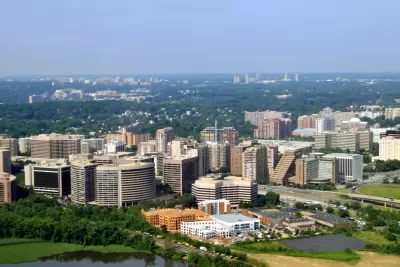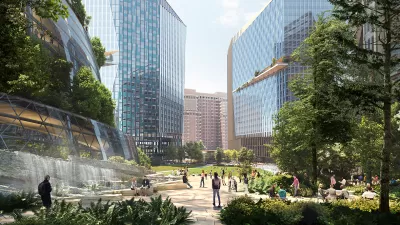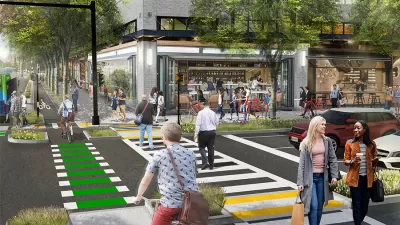Northern Virginia's housing market won't follow the path of the Seattle housing market, according to Amazon officials, because they have a new growth plan.

"Amazon said its second headquarters in Arlington will not aggravate housing problems as much as the company has in Seattle because it will be able to plan for growth here in a way that it couldn’t in earlier years in its home base," report Robert McCartney and Patricia Sullivan.
Jay Carney, a senior vice president with Amazon, revealed those insights in a "wide-ranging" meeting last week with Washington Post editors and reporters.
Carney was responding to a chorus of criticisms about the company's potential to "drive up housing costs and displace low- and middle-income residents," according to McCartney and Sullivan. Part of Carney's reasoning is that the company has a plan for its growth in mind, but "when Amazon was starting out in Seattle, officials didn’t know the company would undergo explosive growth and create 45,000 jobs."
The Amazon second headquarters is already, and quickly, expanding its footprint on the Crystal City area of Arlington County, Virginia. The meeting comes days after Amazon listed its first job openings in the area. "The company has leased temporary space in Crystal City and will start operations in June instead of October, as originally planned," according to the article.
In related news, Patricia Sullivan also reported in a separate article posted on the same day that thousands of documents released under a Freedom of Information Act request by the Washington Business Journal and now posted on the county’s website, revealed the details of negotiations between Amazon and Arlington County officials to bring the headquarters to Northern Virginia.
FULL STORY: Amazon says it will avoid a housing crunch with HQ2 by planning better than it did in Seattle

Study: Maui’s Plan to Convert Vacation Rentals to Long-Term Housing Could Cause Nearly $1 Billion Economic Loss
The plan would reduce visitor accommodation by 25,% resulting in 1,900 jobs lost.

North Texas Transit Leaders Tout Benefits of TOD for Growing Region
At a summit focused on transit-oriented development, policymakers discussed how North Texas’ expanded light rail system can serve as a tool for economic growth.

Using Old Oil and Gas Wells for Green Energy Storage
Penn State researchers have found that repurposing abandoned oil and gas wells for geothermal-assisted compressed-air energy storage can boost efficiency, reduce environmental risks, and support clean energy and job transitions.

Private Donations Propel Early Restoration of Palisades Playground
Los Angeles has secured over $1.3 million in private funding to restore the Pacific Palisades playground months ahead of schedule, creating a modern, accessible space that supports community healing after recent wildfires.

From Blight to Benefit: Early Results From California’s Equitable Cleanup Program
The Equitable Community Revitalization Grant (ECRG) program is reshaping brownfield redevelopment by prioritizing projects in low-income and environmental justice communities, emphasizing equity, transparency, and community benefits.

Planting Relief: Tackling Las Vegas Heat One Tree at a Time
Nevada Plants, a Las Vegas-based nonprofit, is combating the city’s extreme urban heat by giving away trees to residents in underserved neighborhoods, promoting shade, sustainability, and community health.
Urban Design for Planners 1: Software Tools
This six-course series explores essential urban design concepts using open source software and equips planners with the tools they need to participate fully in the urban design process.
Planning for Universal Design
Learn the tools for implementing Universal Design in planning regulations.
Ascent Environmental
Borough of Carlisle
Institute for Housing and Urban Development Studies (IHS)
City of Grandview
Harvard GSD Executive Education
Toledo-Lucas County Plan Commissions
Salt Lake City
NYU Wagner Graduate School of Public Service





























